Mounting Air Plants 101
One of the things that we love about air plants is that they are pretty versatile when it comes to decorating. They can easily be attached to wreaths, shells, driftwood, and well, anything that you think of! It’s nice to have a little bit of green to enjoy inside your house and air plants make it just a little bit easier since they don’t need soil!

If you’ve ever wondered what is the best way to mount or attach air plants, you’ve come to the right place! Below we have compiled a list of some of the easiest ways you can mount your favorite air plants.
Wire:
We usually recommend attaching with wire whenever possible. Just make sure that you are not using copper wire, as copper is toxic to air plants and can kill them. When using wire, you can carefully “loop” the wire through the bottommost leaves of your plant and wrap it a few times around the base, then attach to your wreath or whatever object that you are attaching to. This is the method that we prefer, as you can remove the plants if needed to water or relocate easier than if you are using glue.
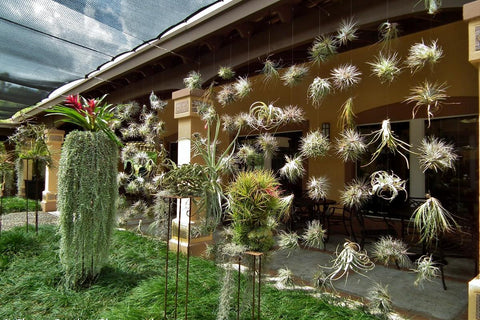
Check out this beautiful hanging display at Bok Tower Gardens. A little bit of fishing line can create something beautiful inside or out!
Fishing Line:
This is an easy way to attach air plants to a wreath or driftwood, and it is clear so it won’t be visible, so that’s a plus! Just use the same method as with the wire, just weave the fishing line through the leaves of the plant and then secure with a knot. You can also make some neat floating arrangements with fishing wire if you hang air plants from the end of a long piece of line and attach to the ceiling or a shelf.
Roots:
Air plants don’t use their roots to draw in nutrients or water, and their main purpose in the wild is to anchor plants up in trees. You can read more about air plant roots in our article, All About Air Plant Roots. You can do the same thing if you have some time on your hands. You can naturally let your plant attach itself to a piece of driftwood, a wreath, tree, etc. (This can take a while, so be patient) If you are a little more impatient and don’t want to wait for the plant to naturally anchor itself, you can also use wire to attach plants to an object by using wire to wrap around the roots of the plant instead of looping wire through the plant’s leaves.
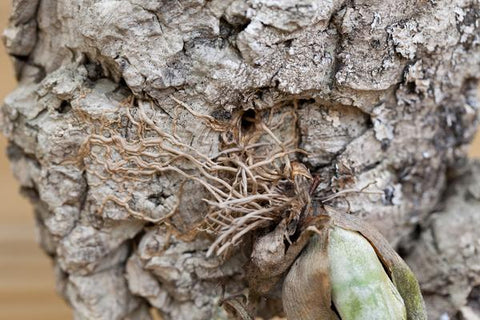
Glue:
We don’t usually recommend using glue to attach air plants to something because it makes it harder to water and care for your plants. It can be done though! When using glue, you can use a plant safe glue, such as E6000, which is also waterproof. Make sure to take extra care when gluing to not get glue on any of the leaves, just dab the glue on the base of the plant and let it dry to attach. If you are in a pinch and want to attach something quickly, you can use hot glue, although this isn’t our preferred or recommended method. Hot glue isn’t waterproof and won’t last as long as other types of anchoring.
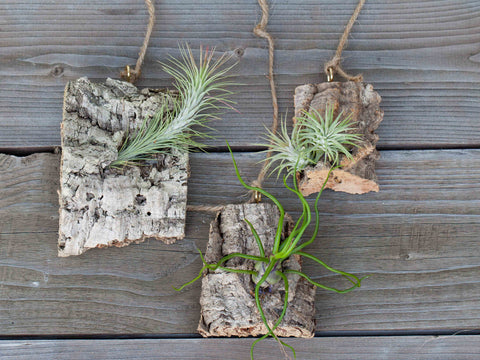
A few last tips:
- When mounting plants with bulbous bases (such as the T. bulbosa belize, T. caput medusae, or T. pseudobaileyi) make sure to mount them horizontally or upside down to help prevent water from collecting in their bases which can cause them to rot.
- If you do use glue to mount your air plants, be sure to dunk or spray them instead of soaking. Soaking may cause the plant to rot against where it is anchored, since you aren’t able to remove the plant for watering. As always, if possible, shake out any excess water from your plant, so it has less chances to rot.
- If you are mounting and displaying air plants on a wreath that will reside outside on your front door, be sure to monitor how much sun/moisture that your wreath is receiving throughout the day. If you notice there is a lot of direct sun, we would recommend bringing your wreath inside during the hottest part of the day. The same goes for those who live in colder climates. Since these are tropical plants, they don’t enjoy temperatures that dip too low. So if you are using a wreath during the Fall or Winter months, maybe display it on the inside of your door so they don’t die!


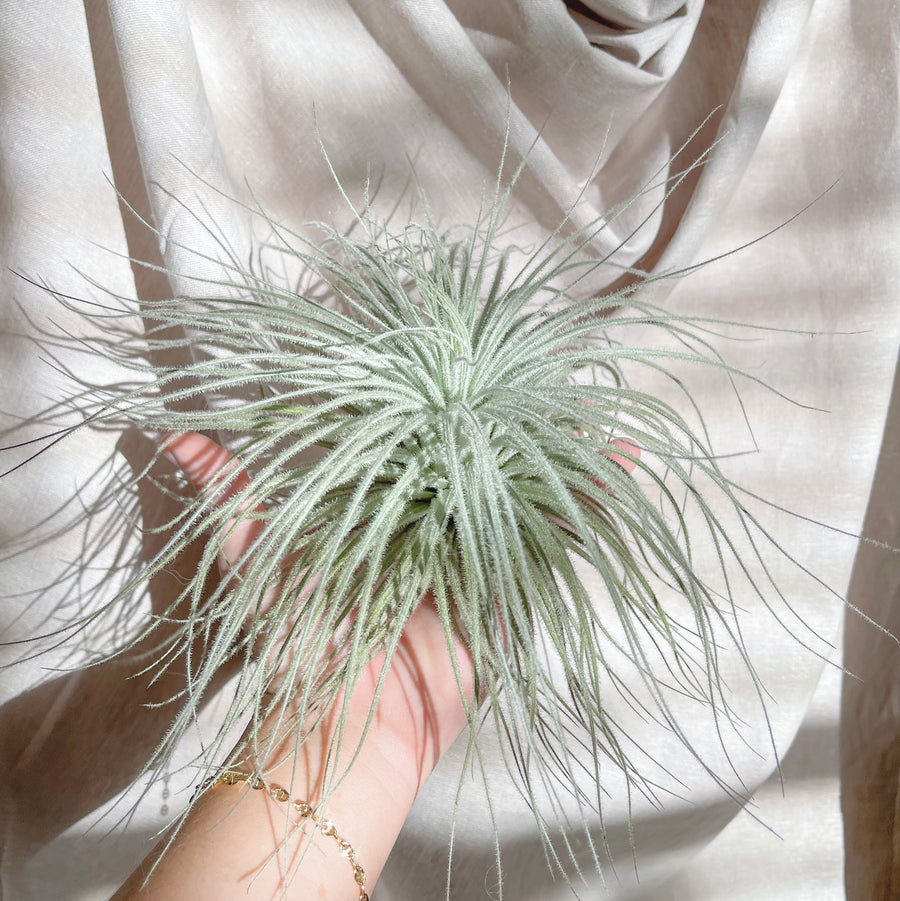
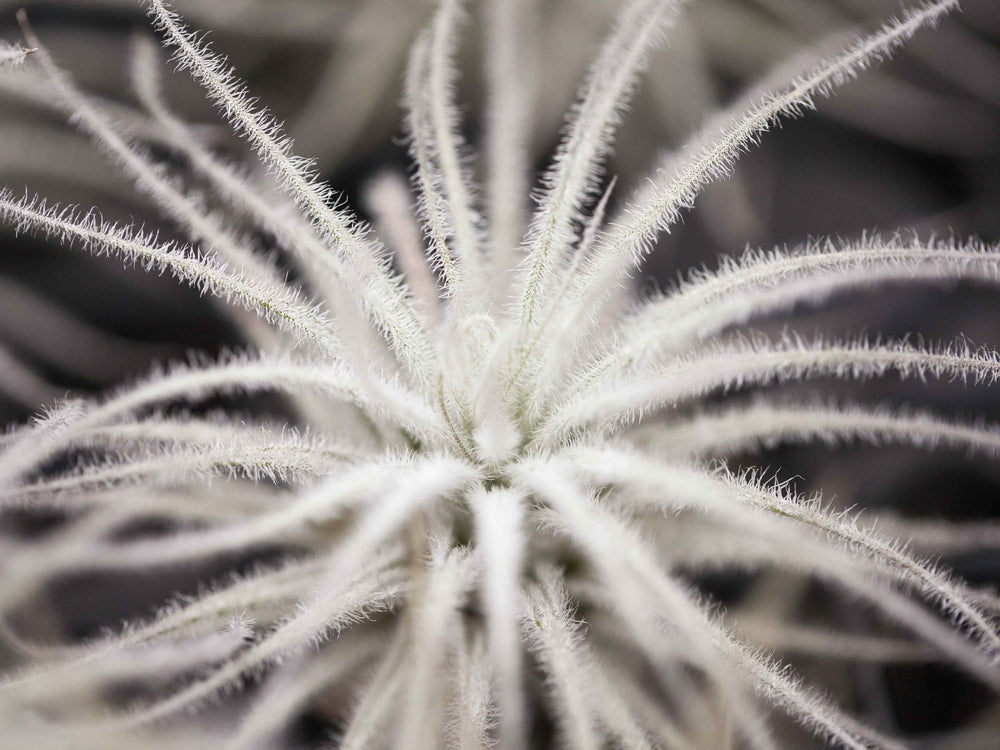
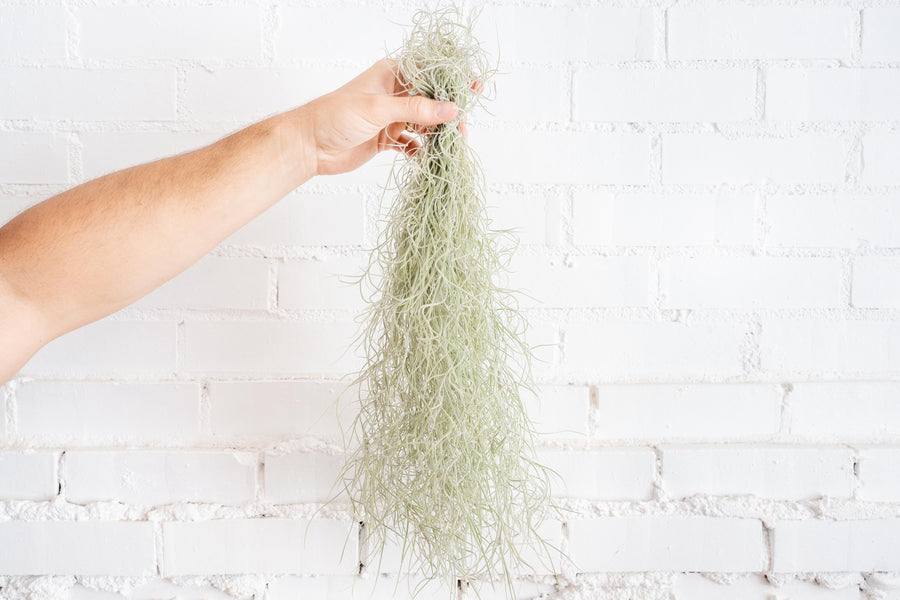
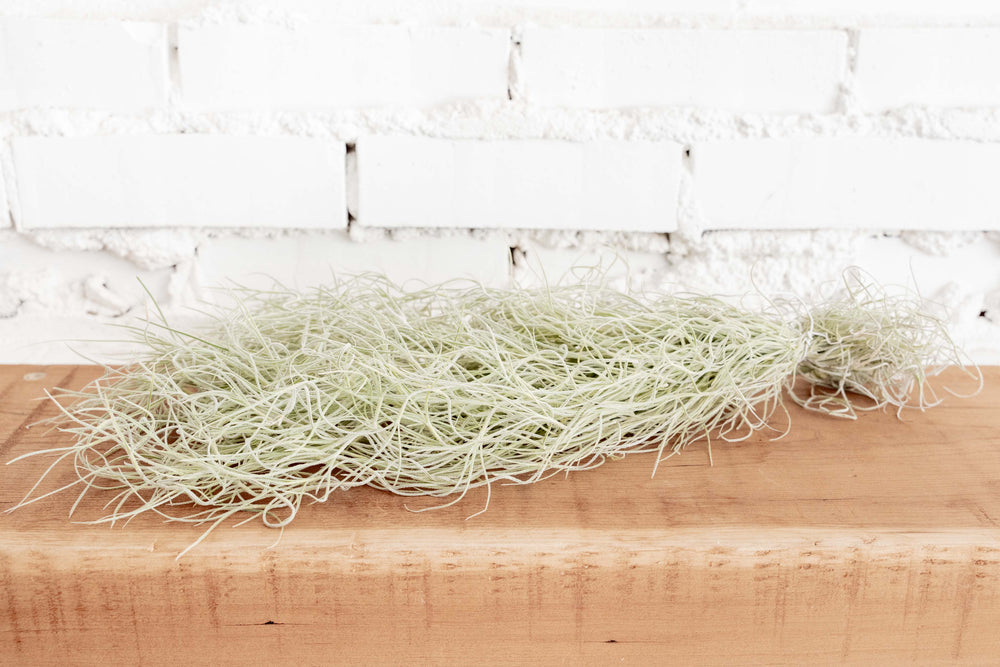
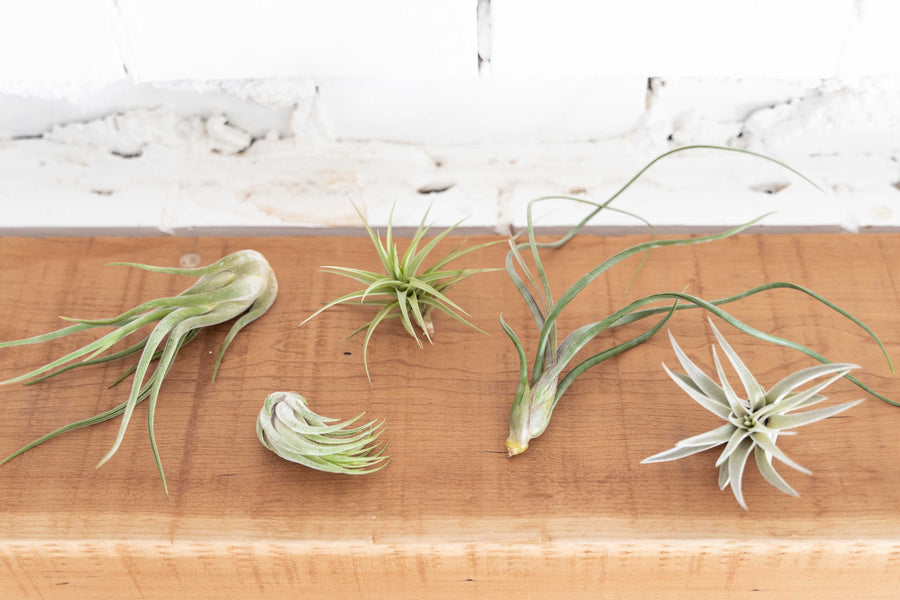
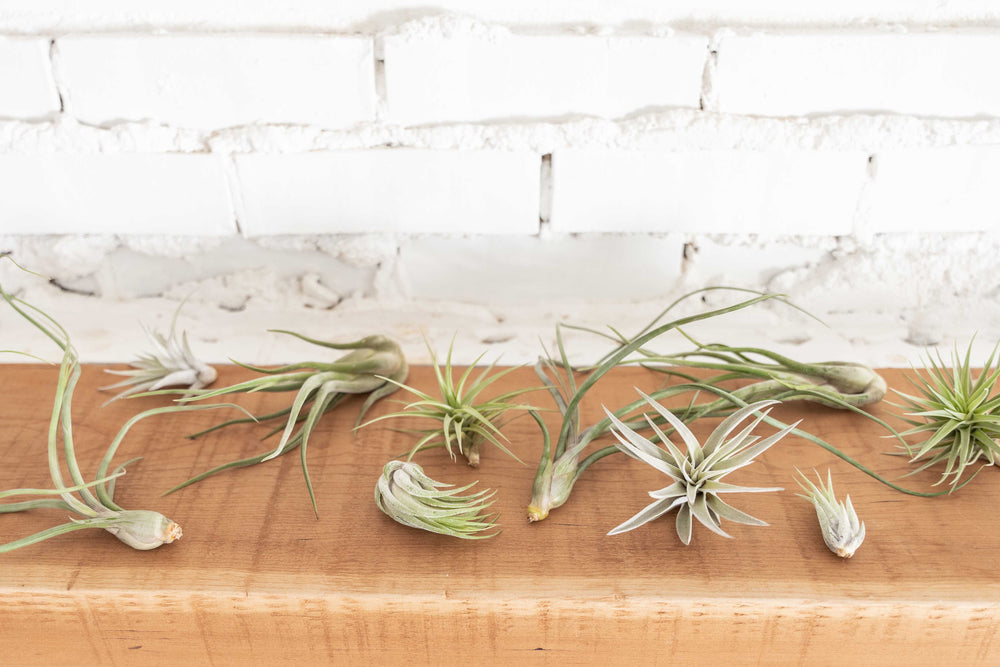
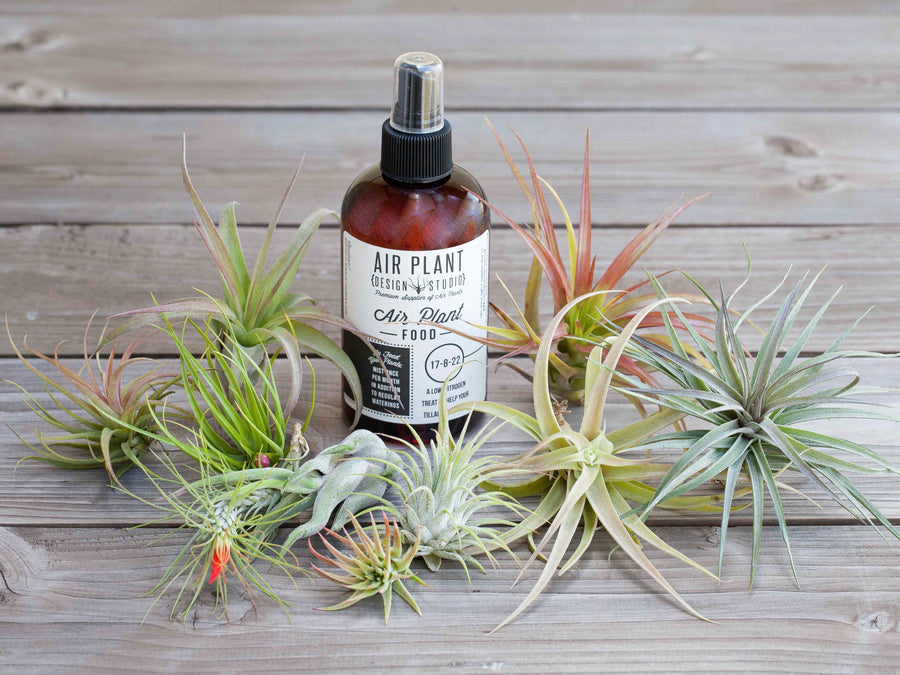
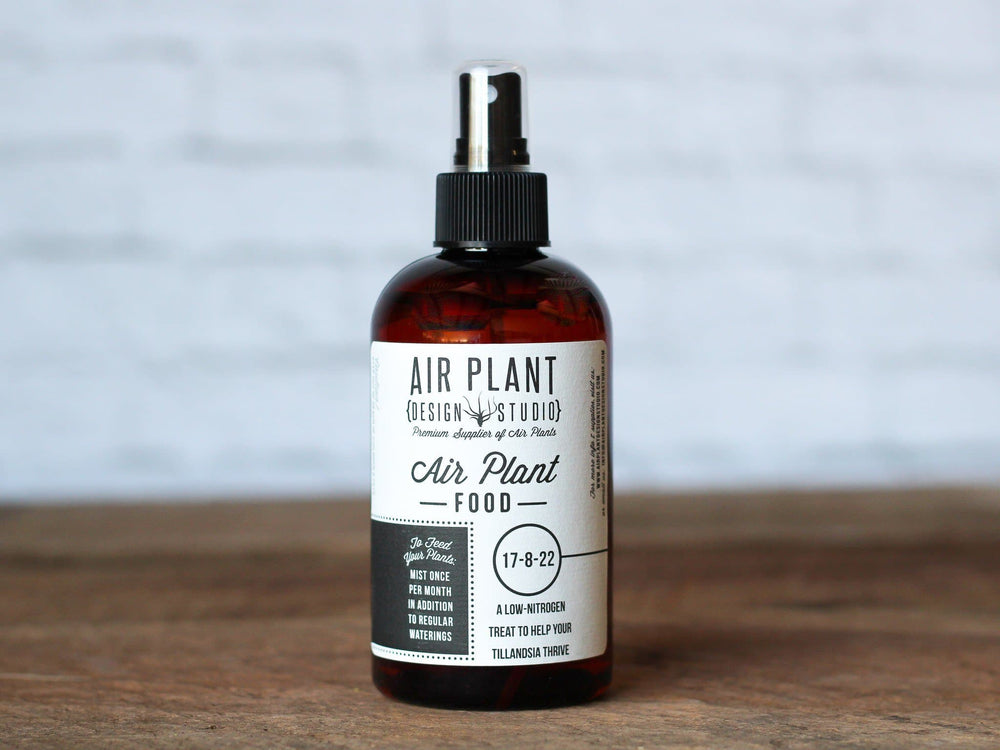
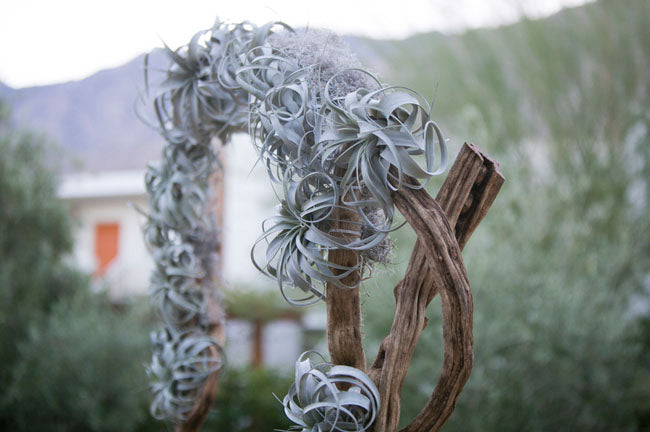
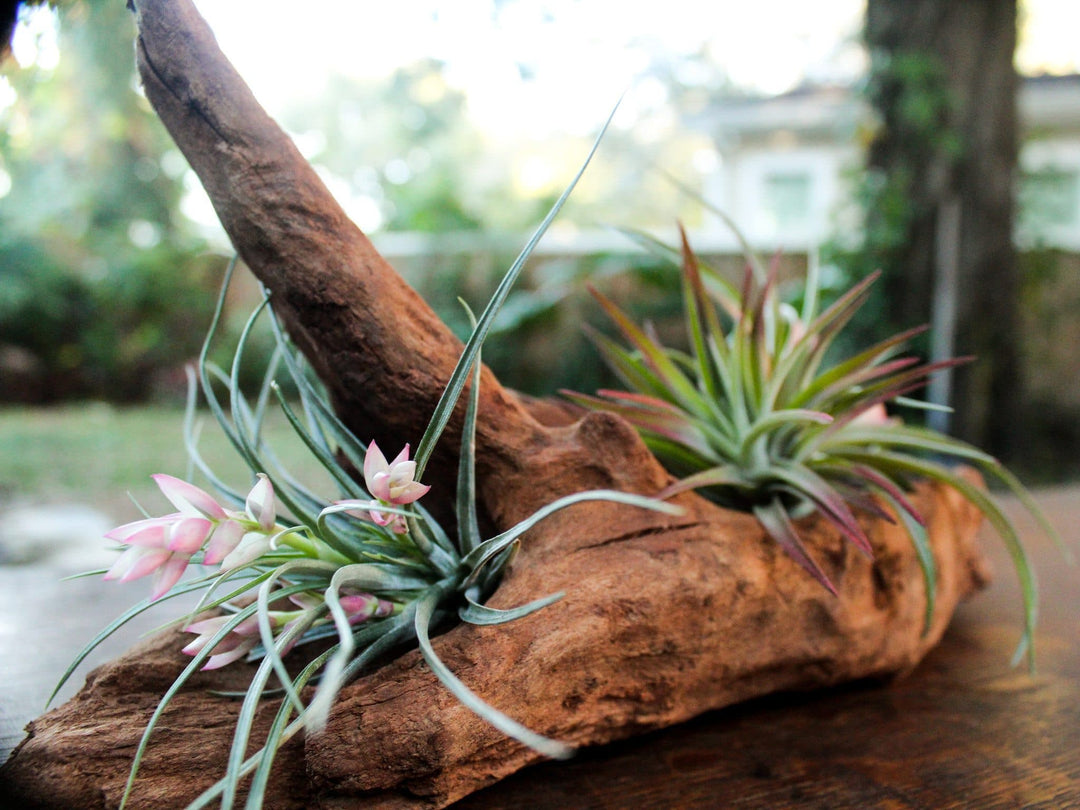
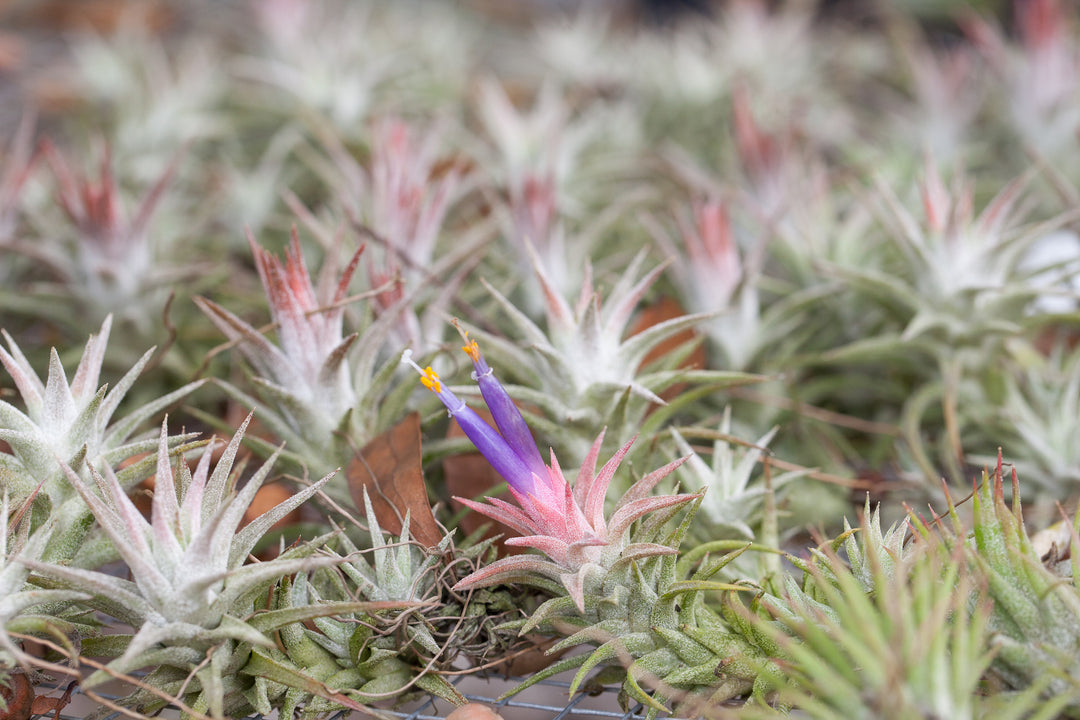
Leave a comment